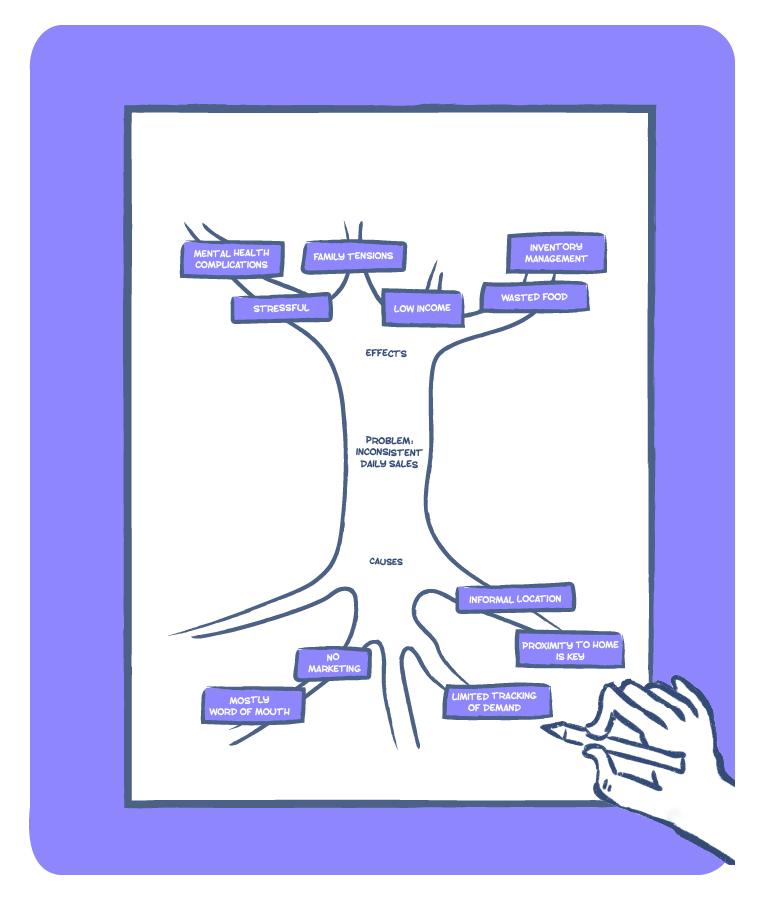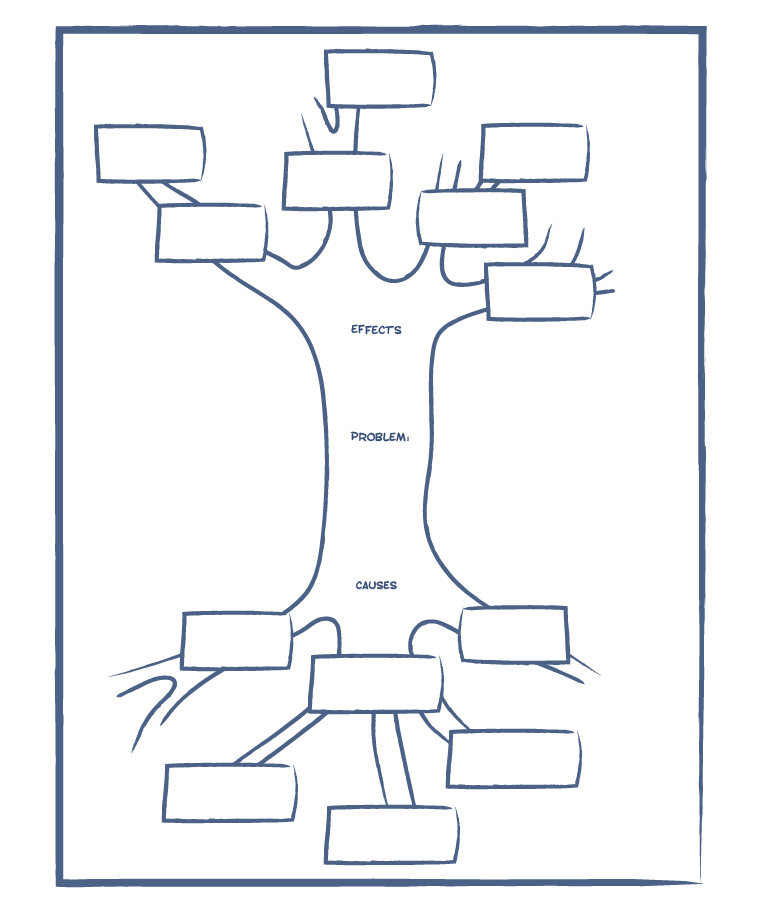HUMAN CENTERED DESIGN | FOUNDATION
Problem Tree + 5 Whys
60 Min
Problem Tree is a tool used to map effects and causes relevant to a problem. While traditionally the tool has been looked at through a problem lens, it can also be used to map opportunities, and trends. It is used in the planning stages to explore lines of enquiry and priorities. 5 Whys is a tool that is often used as part of the Problem Tree activity, it helps teams get to root causes.
USE CASES
- Unpack a problem or topic to build understanding in a group.
- Identify potential root causes for challenges and opportunities.
- Uncover unexplored opportunities and challenges.
LIMITATIONS
Teams may struggle to map all effects and causes early in the process, without the benefit of research and reflection.

